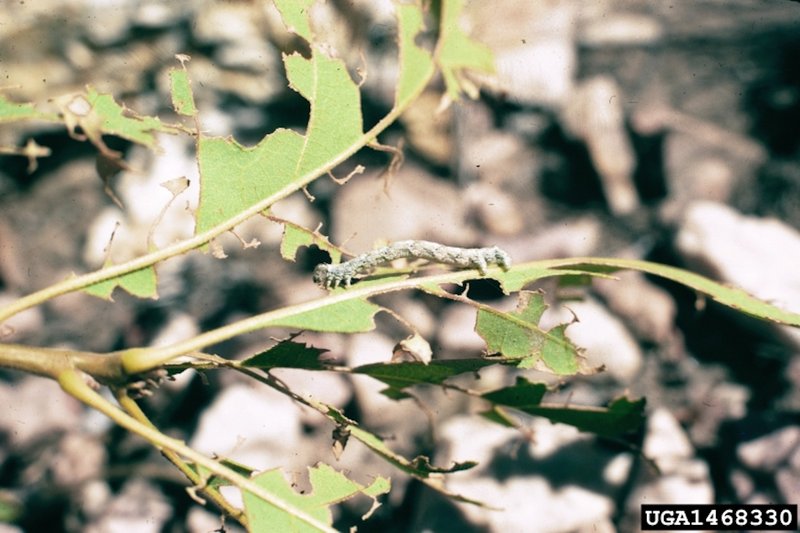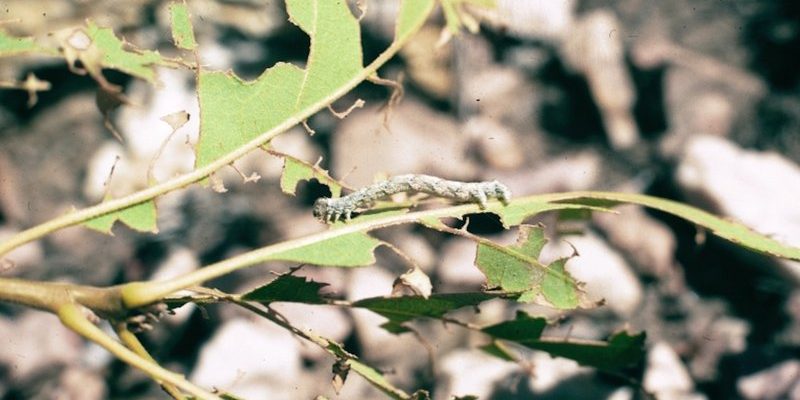
Inchworms are fascinating creatures, often mistaken for caterpillars. They’re actually the larvae of certain moths, specifically in the Geometridae family. As temperatures rise, these inchworms emerge from their dormancy, ready to munch on fresh vegetation. Think of them as nature’s little gardeners, helping break down leaves and initiate new growth. By understanding why their populations spike in early spring, we not only get a clearer picture of these critters but also gain insight into how ecosystems function.
Understanding Inchworm Life Cycles
To get a grasp on why inchworm populations explode in spring, let’s first take a look at their life cycles. Inchworms typically undergo complete metamorphosis, which consists of four stages: egg, larva (the inchworm), pupa, and adult moth. When the weather warms up, adult moths lay eggs on tree branches or soil, which hatch into inchworms as the temperatures remain favorable.
Once they hatch, inchworms enter their larval stage, where they feast on leaves. You might wonder what makes spring so special for them. The answer is simple: warmer temperatures and abundant food sources. As trees start to bud and produce tender new leaves, inchworms have a buffet at their disposal. This abundance allows their populations to grow rapidly, as each inchworm can consume a lot of foliage in a short period.
Weather Conditions and Inchworm Emergence
Weather plays a significant role in the timing of inchworm populations. As winter fades, the days get longer and warmer. This change prompts the earth to wake up. Sunshine warms the soil, and sudden rain showers provide just enough moisture to stimulate plant growth. As a result, inchworms emerge when these conditions are ripe for them.
You might think of it like setting the stage for a grand performance. Just as actors need the right environment to shine, inchworms require the right weather to thrive. If it’s too cold or dry, they’ll delay their emergence. But once the conditions align, it’s game on! It’s during this time that we see the spike in their populations, and they start to crawl out in search of food.
The Role of Vegetation in Inchworm Growth
As inchworms emerge from their hiding spots, they’re ready to munch on fresh vegetation. Spring brings a surge of new leaves, which are soft and tender—perfect for these little critters. You could think of it like an all-you-can-eat buffet for inchworms! They particularly enjoy trees like oak, maple, and birch, which are abundant in many parks and forests.
This availability of food plays a crucial role in their population spikes. With ample leaves to consume, inchworms can grow quickly. A single inchworm can consume a staggering amount of foliage in a short time, enabling them to mature into adult moths. This rapid growth is essential for their survival and reproduction, which is why the early spring surge is such a critical time for them.
Predators and Inchworm Populations
While inchworms enjoy their spring feast, they also have to watch out for predators. Birds, spiders, and even parasitic wasps have developed a taste for these little guys. In early spring, as inchworm populations begin to rise, predator populations are also on the up-and-up.
Think of it as a balancing act in nature. A sudden surge in inchworm numbers will attract more predators looking for an easy meal. If the balance tips too far towards the inchworms, their numbers could crash due to predation. Conversely, if there are too many predators, inchworm populations might dwindle. This constant ebb and flow keeps ecosystems healthy and functioning.
Impact on Local Ecosystems
The spike in inchworm populations doesn’t just affect the inchworms themselves; it also plays a significant role in the local ecosystem. When inchworms munch on leaves, they can facilitate new plant growth. By selectively eating certain types of leaves, they can help maintain a balance in vegetation, ensuring that no single plant species takes over.
Additionally, as inchworms are consumed by various predators, they contribute to the food chain. They provide an essential food source for birds and other wildlife during a time when fresh food can be hard to come by. This interconnectivity showcases the importance of understanding how each species plays its role in the grand design of nature.
How Climate Change Affects Inchworm Populations
Climate change is impacting ecosystems worldwide, and inchworm populations are no exception. As temperatures rise, the timing of seasonal events is shifting. This means that inchworms may emerge earlier than usual, leading to mismatches in their life cycles with other species, including their predators and food sources.
For instance, if inchworms hatch before their food sources are lush and ready, their populations may suffer. On the other hand, if they emerge too late, they may not have enough time to mature before winter hits. These changes can affect the entire ecosystem, leading to potential declines in biodiversity.
There’s a clear lesson here: understanding inchworm populations helps us grasp broader environmental changes and the health of our ecosystems.
Concluding Thoughts on Inchworms
Inchworms may be tiny, but they play a big role in our ecosystems. Their populations spike in early spring for several reasons, from favorable weather to plentiful food sources. By appreciating these creatures and their life cycles, we gain valuable insight into how nature operates.
As we observe inchworms inching through parks and gardens, let’s remember the delicate balance of life they’re part of. They remind us of the connectedness of all living things and encourage us to take notice of the amazing cycles of nature. Understanding why inchworm populations spike is not just about the worms; it’s about celebrating the intricate dance of life happening all around us.

